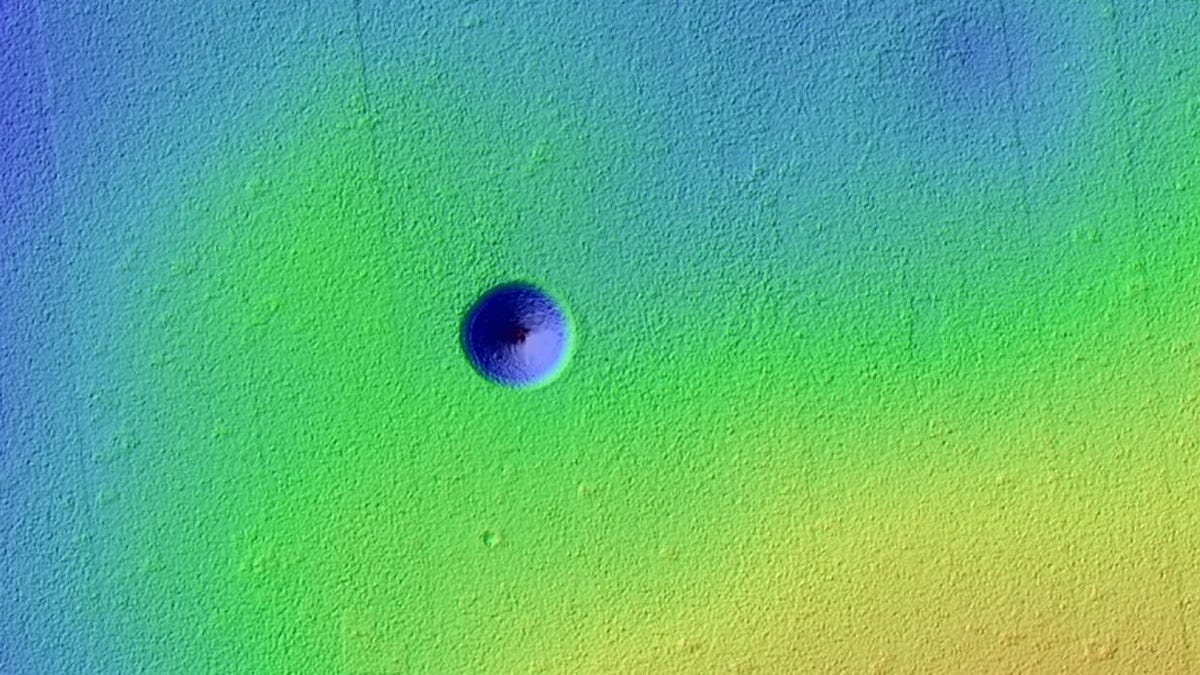Scientists find Mars lava tubes could be roomy habitats for humans
Our future homes away from Earth may be built inside lava caves on the moon and Mars.
This massive pit found on the Pavonis Mons volcano on Mars may possibly be an entrance to a lava tube below.
Living on the moon or Mars isn't just about getting there. If you're going to spend a lot of time in either place, you need protection from radiation and meteorites. Instead of building glass bubbles on the surface, scientists are eyeing the insides of lava tubes for human habitation.
A new study took a look at just how much elbow room we could expect to find inside lunar and martian lava caves. In short: a lot.
"Researchers found that Martian and lunar tubes are respectively 100 and 1,000 times wider than [lava tubes] on Earth, which typically have a diameter of 10 to 30 meters (32 to 98 feet)," the University of Bologna said in a release this week. Lower gravity on the moon and Mars helped those tubes achieve their massive sizes.
The team, led by scientists at Bologna and the University of Padua, compared data on moon and Mars tubes with what we know about similar (though smaller) tubes on Earth. The analysis suggests many of the moon's caves likely have intact and stable interiors that make them particularly enticing for future exploration. The team published its work in the journal Earth-Science Reviews last month.
Where do these caves come from? The University of Arizona HiRise camera team for NASA's Mars Reconnaissance Orbiter explains: "Sometimes the tops of lava flows freeze on the surface even while the lava continues to move underground in a lava tube. If these tubes drain, then lava tube caves can be left behind."
"Lava tubes could provide stable shields from cosmic and solar radiation and micrometeorite impacts which are often happening on the surfaces of planetary bodies," said lead author Francesco Sauro, a speleologist (cave expert) at the University of Bologna. "Moreover, they have great potential for providing an environment in which temperatures do not vary from day- to night-time."
Sauro also heads up the European Space Agency's CAVES and Pangaea programs, which train astronauts in geology and how to work in and explore underground environments.
NASA is thinking ahead to visiting lunar lava tubes, a natural next step before we try spelunking on Mars. The space agency sent a robot named Moon Diver to explore lava tubes in Hawaii in 2019.
This new study should encourage continued work on developing underground solutions for surviving on less hospitable worlds than Earth. For a sobering interplanetary gut check, learn all about the terrifying reality of actually living on Mars.


